
Joint letter – ICC reform and expansion risks diverting ETS Revenues from real climate action
In light of the European Commission’s ongoing considerations to amend the ETS State Aid Guidelines, revising the rules for Indirec...
News

Publish date: June 8, 2015
News
ST. PETERSBURG – Last October, the St. Petersburg-based shipyard Baltiisky Zavod – Sudostroyeniye officially announced it was planning one year later to make delivery of the world’s first floating nuclear power plant. The newbuild, which has spent an eternity in construction limbo, is to be moored in a remote area in Russia’s Far North. Despite the off-the-charts costs and equally staggering risks, Russia seems dead set on completing the project. What will be the consequences of this gamble? And could Russia have chosen a less economically and environmentally costly option to bring power and heat to faraway consumers?
A project gone obsolete long before realization
Russia is an immense country, spanning almost a dozen time zones and regions as diverse geographically as they are in many other respects. Among the distinguishing features of its northern territories is the multitude of small villages and settlements with populations varying from a handful of households to several thousand inhabitants. With tens or even hundreds of kilometers between them, these villages are, as a rule, far removed from major power grids or gas trunk lines, which means they have to rely on stand-alone energy supply.
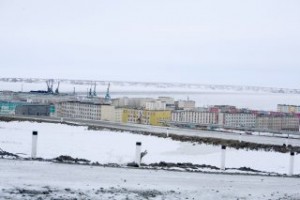
At the same time, because roads are basically absent and rivers freeze over early in the season, fuel deliveries to these regions are both complicated and expensive. The main argument put forward by proponents of small-scale nuclear power plants in Russia is exactly that: the need to ensure stable power supply in the country’s North and Far East. According to their calculations, these projects are promising even as the investments per kilowatt of installed capacity associated with various such designs are five or more times the costs required by large stationary nuclear power plants.
Indeed, some twenty years ago, the choice of sources of power and heat supply in Russia’s northern regions was only available in traditional diesel fuel or coal, which have been used in these areas since the 1930s and are, mostly, used now to provide electricity and heating – or, as a theoretical alternative, small-capacity nuclear reactors.
These considerations spurred the birth, in the early 1990s, of the project of a floating nuclear power plant (FNPP) to supply power and heat to the villages scattered along the shore of the Arctic Ocean. But implementation of the project kept getting delayed. Only in 2002 did the former Ministry of Atomic Energy and the Russian Shipbuilding Agency jointly put together an FNPP project plan. In 2006, Minatom’s successor agency, State Atomic Energy Corporation Rosatom, signed a launch order contract with the Severodvinsk-based shipbuilding enterprise Sevmash. Seven floating nuclear power plants were planned for construction over the next ten years. According to Rosatom, a large enough series was the only way to ensure the project its economic prospects, including those of selling such stations to potential customers abroad.

The problem for prospective investors or buyers, however, is that today, no comprehensive transparent and convincing substantiation exists of the economic and other important aspects of the project – such as safety or regulatory framework to support the FNPP’s operation, among other things. One should bear in mind as well that a floating nuclear power plant is much more than just a source of heating and power: It is also radioactive waste, nuclear materials and technologies and associated risks, operating procedures that include operations involving nuclear and radiation hazards, specially trained personnel, and many other factors to worry about. These are the things that Rosatom’s would-be customers will have to take into account as they make their decision about whether or not to buy or lease such a plant.
Furthermore, Rosatom presented its FNPP project as innovative, yet in essence it was an idea developed as far back as the 1970s, meant initially for nuclear-powered icebreakers.
Nuclear reactors in the heart of St. Petersburg
In early 2008, the FNPP project hit a snag when Rosatom and Sevmash clashed over failed construction deadlines. On a government decision, construction was moved to a St. Petersburg-based shipyard, Baltiisky Zavod. On June 30, 2010, the hull of the new FNPP Akademik Lomonosov was solemnly floated in St. Petersburg.
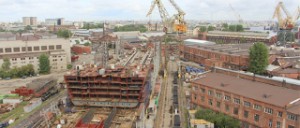
Rosatom’s head Sergei Kiriyenko, in attendance at the ceremony, expressed confidence that the plant would in the second quarter of 2012 be seen off to the Russian Pacific Fleet’s closed town of Vilyuchinsk on the Kamchatka Peninsula – the second choice of destination settled on for the first FNPP station, planned initially for Severodvinsk, in the north of European Russia, and later changed again to Pevek, a small locality on the northern shore of the Far Eastern autonomous district of Chukotka. Still, by mid-2012, the FNPP had not yet been completed.
Fast-forward to October 2014, when Baltiisky Zavod’s general director Alexei Kadilov, tells journalists that the shipyard is planning to complete and have the power-generating facilities of the world’s first FNPP ready for transportation to its place of mooring in September 2016.
The plant, then, according to Kadilov, could start operation in Chukotka already in 2017, but because of the unavailability of the necessary shore-based infrastructure to accommodate the FNPP and provide power and heat transmission, this time frame may be deferred yet. Nuclear fuel loading, reactor launch, and testing are expected to take place in the center of St. Petersburg.
Experts say this plan is fraught with serious danger, though Baltiisky Zavod’s Kadilov assures that “requirements in nuclear safety today are so strict that there is no doubt that everything will go properly and according to procedure.” Properly or not, accidents at nuclear power plants do happen, however, every now and again, for reasons of, among other things, the human factor.
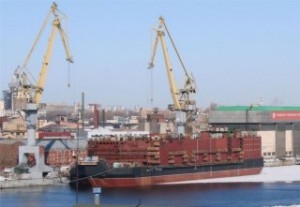
The small nuclear plant and its gigantic cost
The floating nuclear power plant has the maximum power capacity of 80 megawatts and thermal capacity of 300 megawatts and includes two KLT-40S reactor units, which have been developed based on marine propulsion prototypes. The plant overall comprises the floating power-generating station proper, with its two reactors and two steam-turbine plants on board, as well as the waterside engineering facilities for the mooring and detachment of the station and the transmission of its power and heat to the shore, and the onshore structures needed to deliver the energy to the outer grid for further transmission and distribution to customers. In accordance with the design-based operating regime, three reactor reloads are envisioned to ensure the plant’s operation throughout the time between overhauls, which is ten to twelve years. It should also be taken into account that the station’s operation and fuel reloads generate radioactive waste of various kinds. For that purpose, storage facilities are provided for on board to house both solid and liquid radioactive waste and spent fuel assemblies.
It is commonly held that the smaller the scale of a project the better control the customer has over the project’s costs. In practice, however, the cost of the FNPP project that Russia is currently pursuing has risen from the $150 million declared by Minatom in 2001 to $550 million in 2010 (at the time, of the total cost of the FNPP, or RUR 16.5 billion in 2010 exchange rates, RUR 14.1 billion was supposed to be spent on the station itself and the remaining RUR 2 billion was to go for the hydraulic engineering and shore-based facilities) to $1.2 billion as of end 2013, when the order was completed to about 80%. In other words, the project’s cost has over twelve years ballooned to eight times what it was in the beginning.
And, in a most recent update, the new cost of building the Akademik Lomonosov has spiked to what now is estimated at RUR 37.3 billion ($740 million), according to a report in the Russian government’s official newspaper, Rossiiskaya Gazeta, which cites government documents. This includes an additional RUR 5 billion that is planned to be spent on building the transmission facilities and other shoreline infrastructure in Pevek to have the town ready to receive the FNPP by 2019. (One confusing factor, though, to watch out for here is that the rouble itself has had a dramatic fall over the past several months, due to the deepening economic crisis in Russia, crashing especially spectacularly last December and never quite making a recovery since; it again suffered a hit in the last week or so. If, say, the RUR 37.3 billion was the cost rise announced back in December 2013, for instance, it would have translated into $1.1 billion. But the rouble is the national currency used to exchange goods and services, and it is the 37.3 billion roubles Russia will have paid for the project at a time when economic prudence might call for cutting down on extravagant expenses).

So, the delivery date was pushed from 2012 to end 2016. Each year of delays further increases the project’s cost by another 15 to 20 percent and, apparently, nobody will be particularly surprised if the final cost of the floating nuclear plant goes beyond $2 billion. In some expert estimates, one kilowatt of the FNPP’s installed capacity already costs $10,000 – or ten times as much as at any traditional heat-generating plant – and that cost may even grow to $20,000. For how much, then, would one kilowatt of power have to be sold, when one adds to the capital expenses the operating costs and other outlays – and who will buy electricity at such prices? With calculations like these, no recoupment of investment in principle can be part of any serious conversation, much less a discussion of a particular payoff period. This, even as one considers that the project is financed out of federal target allocations – i.e. is being paid for with taxpayer money – and, accordingly, the economic performance requirements it has to satisfy are extremely low.
Energy production: feast today, fast tomorrow
As with common nuclear power plants, capital costs are of paramount importance for the project’s economic viability, but what bears much more significance for the FNPP project is the uncertainty that has to do with the plant’s operation once it arrives at its destination.
First of all, the volume of sales of the power produced by a plant, expressed as the installed capacity utilization factor – or the ratio of actual productive output to the output that could potentially be gained if full capacity was used – depends, mostly, on two things: demand for energy in the region and the uninterrupted operation of the plant. For an isolated power grid that cannot sell surplus power outside the region during low-consumption periods, one can realistically expect a lower capacity utilization factor: no more than 50 percent. Because of that, the floating nuclear power plant’s power will be much more expensive than what is envisioned with the capacity utilization factors equaling 74 percent and 67 percent – the values that in the project describe the projected volumes of sales of the plant’s power to consumers.
There are, besides the power demand limitations, those of the technological nature. Due to the specific constraints of a nuclear floating facility, an FNPP cannot operate without interruptions as it must regularly undergo maintenance and – every ten or twelve years – yard repairs and dock repairs as well. During yard repairs, the FNPP’s reactors are also refueled and radioactive waste is removed. This work is to take one year, after which the station can resume operation. Consequently, to avoid depriving consumers of power and heating during the period when the FNPP is unable to provide energy, replacement ground-based generating capacities must be available in the area. Most likely, one of the existing cogeneration heat and power plants will be used as backup capacity, because construction of a second FNPP – one that could compensate for the absent output of the first one as the latter undergoes repairs – has not even yet started. And if, at least for the purpose of a backup energy source, the remote region of the FNPP’s future deployment will have to use a cogeneration plant – and, by extension, expensive fuel brought from mainland – then the main argument for the FNPP as the best choice of energy for such a location becomes one that is hard to defend. One way or another, all these considerations make it impossible to achieve the values that the project states for the future capacity utilization factor and, therefore, the claimed payoff period of 12 years as well.

Secondly, one must factor in the infrastructure that will have to be built to transmit the energy produced by the FNPP to the shore: the wharf and the power and heat transmission facilities, and other necessary structures. Construction of these in the severe conditions of the Far North is quite expensive. Maintenance vessels will be needed as well. On top of that, a floating nuclear facility requires continuous security measures not just during towing but throughout its stationing period as well. Security will have to be provided both for the floating station and the related shore-based infrastructure and the surrounding water area as well, including underwater. In other words, a costly physical security system will need to be put together, with at least a battalion of military personnel guarding the area. All this translates into additional investments.
Who’s supposed to foot the bill?
But the immense future expenses – much as the escalation of construction costs and constant failures to keep to the construction schedule – do not seem to bother those responsible for the project’s implementation. What distinguishes nuclear energy from other types of energy generation – such as renewable energy, for instance – is the absence of the inverse relationship between technological progress and an industry’s costs: The prime cost of energy produced does not decrease with the development of production technologies but, on the contrary, only rises. A variety of factors account for this phenomenon. Among the prominent reasons are the increasing safety requirements, introduction of charges levied for future nuclear power plant decommissioning (decommissioning expenses are roughly estimated at 25 to 50 percent of a nuclear plant’s construction costs), charges paid for the management of spent nuclear fuel and radioactive waste. Added to these must be premiums paid to insure against potential accidents and expenses incurred with cleaning up the consequences of large accidents – a burden of which the lion’s share, by virtue of the sheer scale of potential damage, has to be shouldered by the state anyway. (The cleanup of the 1986 Chernobyl disaster cost the Soviet Union, according to Greenpeace, over $300 billion in the most conservative estimate. With the more recent catastrophe, at the Japanese Fukushima Daiichi plant in 2011, The Japan Times gave a cleanup estimate of €75 billion as of late August 2014 – or twice the amount the Japanese government thought it would be in the end of 2011. At the same time, environmental economist Ingmar Schumacher points out in his article published in The Ecologist in February 2014 that the “Fukushima bills are not yet in […] but estimates to date range from around $200 billion up to about $500 [b]illion – many times the entire equity value of any nuclear power corporation.”)
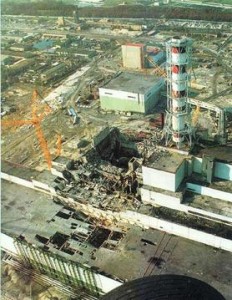
Of course, all these cost items are applicable to a floating nuclear power plant as much as a ground-based one.
In order for the nuclear power sector to continue to rely on state support and ensure its further development, it has to affirm its “low-price appeal” over any alternative sources. The industry’s cost estimates that it presents for government approval can be whatever they may be, but they have to be lower than those of other types of energy generation. Nuclear power plant construction in Russia is done using Rosatom’s own funds as well as money allocated to the state corporation out of the Russian federal budget as an asset contribution toward the development of the nuclear power-generating complex. But the customer tariff is far from enough to balance out the real costs of nuclear generation, and the deficit is covered at the expense of the state, which provides the industry with practically free investment capital, bears the liability for the nuclear risks that exceed those covered by the insurance premiums, and participates to a significant extent in direct financing of the nuclear fuel cycle.
Some of the expense items of nuclear power plants are currently – and will be in the next 20 to 30 years, at least – taken care of mostly by the state. As a result, they supposedly have no impact on the prime cost of one megawatt-hour of nuclear electricity.
But, obviously, the FNPP’s expenses is money that will be taken out of someone’s purse. And furthermore, the project appears all the more wasteful if one takes into account that Pevek or any other energy-starved region in Russia could easily avail themselves of much more economical and environmentally acceptable alternatives.
There’s more than enough wind and sun for everyone
The two reactors of the FNPP are capable of generating up to 80 megawatts of electricity and 300 megawatts of heat. This amount of energy is meant for the supply of power and heat on a territory with a population of 200,000. But the official figure that the Russian Federal State Statistics Service currently gives for the population
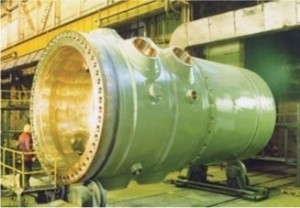
of Chukotka Autonomous District is just over 50,000 residents, and fewer than 5,000 for Pevek itself. (Other estimates peg the Pevek population at no more than 2,500 people). Rosatom believes that stationing the FNPP in Pevek is additionally advisable for the reason of the expected decommissioning of the region’s Bilibino Nuclear Power Plant and Pevek’s own Chaunskaya Combined Heat and Power Plant. But Rosatom itself also concedes that Bilibino’s operating record has demonstrated a very high cost of electricity generation, and the energy to be produced by the FNPP may also prove beyond the region’s means.
Meanwhile, renewable energy has been showing rapid growth in many countries in the past twenty or so years, and the cost of one megawatt-hour of power produced with wind or solar energy has been declining steadily – something that can’t be said about nuclear. And today, traditional sources of energy supply for remote locations in the north, such as coal and diesel fuel, could easily – and, what’s more, to a clear economic advantage – be complemented with wind and, possibly, solar energy as well. For instance, the efficiency of a wind energy converter depends to a significant degree on the strength and constancy of the prevailing winds, which is expressed through the capacity utilization factor. Whereas the capacity factor for wind power installations in Western Europe is about 30 percent, it has been established to reach between 40 and 50 percent in Russia’s northern regions, since these are areas where strong winds are practically a permanent feature. In expert estimates, wind energy’s current production capacity potential in Russia is at a level of some 6,200 billion kilowatt-hours a year – several times as much as the total amount of electricity generated in Russia today! Still, experts point out, as of end 2013, Russia’s investment into renewable energy was 5,714 times less than in Europe and 4,621 times less than in China.
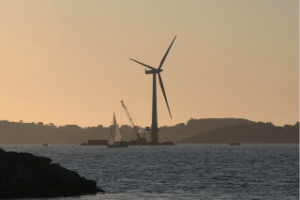
With wind turbines, considerable experience has already been accumulated in shipping and assembling them in any hard-to-access locations, including on the continental shelf. Among a wind turbine’s other undisputable advantages are also the swiftness of delivery and installation – up to six months between the start of construction and the date of commissioning – and the relatively lower cost per one megawatt of capacity. Wind energy converters can be installed wherever consumers are, in any settlement or village. They can be used to generate as much or as little capacity as required, and the number of turbines can be increased or decreased when the need arises. Wind energy installations do not call for building power transmission lines over large distances since a turbine can be installed in sufficient proximity to the consumers. Operating costs are minimal. Complete environmental safety is certainly important, too. Additionally, where nuclear power costs and the costs of producing energy at traditional thermal power plants and condenser-type electricity-only thermal power plants will only rise over time – due to rising fuel prices, among other reasons – the cost of wind-generated power will only decline as wind generator manufacturing technologies advance. Thus, the economic efficiency of employing renewable energy sources in remote and isolated areas may be equal or even better than with using traditional fuels.
The obvious alternatives
Good progress in installing small-scale wind and solar capacities is observed, for instance, on the Kola Peninsula, in the Far North of European Russia, where operating conditions may be comparable with those in Pevek. Last spring, a hybrid “three-in-one” wind-solar-diesel power-generating system, with a combined capacity of 95 kilowatts, was installed in the village of Pyalitsa in the peninsula’s Murmansk Region. According to the project, power supply will be provided around the clock to the village – instead of the previous eight-hour-a-day schedule – and the diesel fuel consumption rate should be reduced from 90 to 4 or 4.5 tons a year. Still, a better illustration is a comparison between the FNPP project and a renewable energy project with a commensurate power output.
2012 saw the start of construction of a wind farm in Arkhangelsk Region, also in Russia’s European north. The project is expected to be commissioned no earlier than 2015 or 2016. In its first phase, the wind farm’s fifty generators are to have a total capacity of 150 to 200 megawatts. The project’s costs are estimated at about RUR 16 billion ($282.4 million). The expected payoff period for the wind farm is 15 years against an average of seven to ten in Europe, since the project is being implemented without federal or regional financial support. Still, the cost of building a wind farm with a capacity on the level of that of the floating nuclear power plant is no more than RUR 6 billion – or some ten times as little as the FNPP was even before the recently updated cost estimate. More than that, there is no need to spend billions of roubles building the wharf and the shoreline infrastructure or creating a costly physical security system, there are no large operating expenses. Even if the expected payoff period for a wind farm in Russia would exceed those in similar projects in Europe, it does not go beyond 15 years – whereas a floating nuclear power plant, with its capacity utilization factor of less than 50 percent and with real electricity prices to consider, will pay off never. Again, with a wind farm, there is no harm to the environment, and no headache for several future generations over what to do with the highly toxic spent nuclear fuel and radioactive waste.
Given the continuing rise of costs incurred on traditional fuel, including its delivery, storage, and the necessary associated environmental protection measures, the economic advantages of wind energy are quite evident. The prime cost of wind-generated power is currently around RUR 3 per kilowatt-hour and, due to the wind energy technologies constantly improving, is only decreasing over time.
Ambition over all
The first FNPP will surely, eventually, be completed: over $1 billion has already been squandered on the project, and a decision to cut one’s losses isn’t an easy one to make. But is this really the only and the most sensible option – providing power and heat supply to small villages and towns in the north with a floating nuclear power plant? Must Russia keep spending huge amounts of money out of the Russian budget to satisfy the nuclear corporation’s ambitions? Couldn’t the energy supply problem be solved using other means – those that will be less costly but safer for the environment? The slogan “There is no alternative to nuclear energy” is long obsolete. The sweeping changes that have taken place in renewable energy over the past twenty years are nothing short of a revolution. Germany, for one, is seeing a booming growth in its wind energy industry, with total wind farm power-generating capacity already surpassing that of the country’s nuclear power plants combined. And by 2022, Germany, having chosen a nuclear-free path after the Fukushima Daiichi disaster, with a plan to gradually shut down all of its seventeen reactors that were in operation at the time, is to have closed down the remaining eight. By 2030, China and many European countries as well are looking to be producing over 50 percent of all energy using renewable energy sources.

The other six FNPPs planned by Rosatom in the series can, of course, be built, too, but the same capacity could be delivered to Russia’s northern regions much faster – making for a much more practical decision, not to mention several times as cheap. The Russian government simply has to make up its mind about what it values more: its nuclear industry’s ambition or a more dynamic and more progressive development of the country. Too bad that this choice is one that in Russia belongs to the government – as opposed to democracies, where people have a chance to have their say.
Still, one important thing to say here is that Rosatom builds its nuclear power plants mostly with funding coming out of state coffers, while benefitting from a net profit earned selling power at controlled prices that have nothing to do with the product’s real cost. At the same time, the bulk of expenses on the management of spent fuel and radioactive waste, the decommissioning costs and the costs of cleaning up after potential accidents, are borne not by the nuclear corporation but by the state – meaning, all Russian citizens. And lastly, there is, of course, no forgetting that nuclear energy poses an enormous danger to the environment, to life on the planet. There are no absolutely safe nuclear power installations, as there are no reactors where the probability of a nuclear accident would be infinitely small. Rosatom itself admits it. And even in accident-free operation, a nuclear power plant constantly emits millions of curies of radionuclides into the surrounding environment – mostly, radioactive noble gases and such biologically hazardous radionuclides as tritium, carbon-14, radioactive iodine, and others. Ambient radiation levels on the Earth and, especially, near nuclear power plants keep rising. And quantity, as we well know, always sooner or later turns into quality.
Alexei Shchukin is a nuclear projects expert with the St. Petersburg Environmental Rights Center (ERC) Bellona. This article was originally published in Russian in a recent issue of Environment & Rights, a quarterly published by ERC Bellona, and has been updated with the latest development concerning the FNPP project. More comprehensive and detailed overviews of the economics of nuclear energy and the economic, engineering, and safety aspects of the floating nuclear power plant project are available in Bellona’s reports “The Economics of the Russian Nuclear Power Industry” and “Floating Nuclear Power Plants.”

In light of the European Commission’s ongoing considerations to amend the ETS State Aid Guidelines, revising the rules for Indirec...

The 5th Industrial Carbon Management (ICM) Forum took place this year on 8-9 December in Athens, Greece, co-hosted by the European Commission an...

Today, the European Commission published a series of Carbon Border Adjustment Mechanism(CBAM)-related documents including two legislative proposals a...

Today, the European Commission published its European Grids Package, presented as an upgrade of the EU’s energy infrastructure to lower bills and boo...

The European Commission is set to publish the the Grids Package on December 10th, the different legislative proposals and secondary legislations rela...
Get our latest news